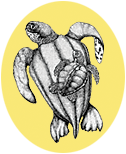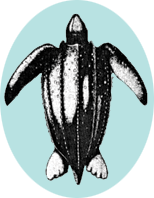Leatherbacks are the largest sea turtles in the world and are the species most commonly seen by boaters in southern New England waters. They can reach lengths of 8 feet, weigh up to 1500 pounds, and are slate gray/black. Leatherbacks are readily identified by their large size and the fore-and-aft ridges which run along the carapace (upper shell). Fishermen and boaters often report seeing a leatherback's large head, which can resemble a seal's head from a distance, lifted above the surface. Observers have reported leatherbacks as looking like an overturned dinghy, or as the size of a Volkswagen beetle. They feed primarily on jellyfish and other gelatinous organisms. Leatherbacks have the ability to raise their internal body temperature above that of the surrounding seawater, allowing them to swim in much colder water than do other sea turtles. Entanglement in fishing/lobstering gear is a threat to leatherbacks when they become entangled in the vertical lines and cannot get to the surface to breathe. They are known to ingest plastic trash, which can be fatal. Leatherbacks and fishermen sometimes occur simultaneously in "hotspots." Such a hotspot occurred in 2010 on Lucas Shoal (Vineyard Sound), where fishermen were catching fluke, and leatherbacks were eating jellyfish.
Sea Turtle Information
Leatherback Video
A leatherback Swimming off Martha's Vineyard.
~ Leatherback Video by Mike Bolinder
A leatherback Swimming in Cape Cod Bay.
~ Video by Andy Gere
A leatherback surfacing off Watch Hill, Rhode Island.
~ Leatherback Video by Scott Mayer
Leatherback eating a lion's mane jellyfish.
~ Video by f/v Finlander
Leatherback Photos
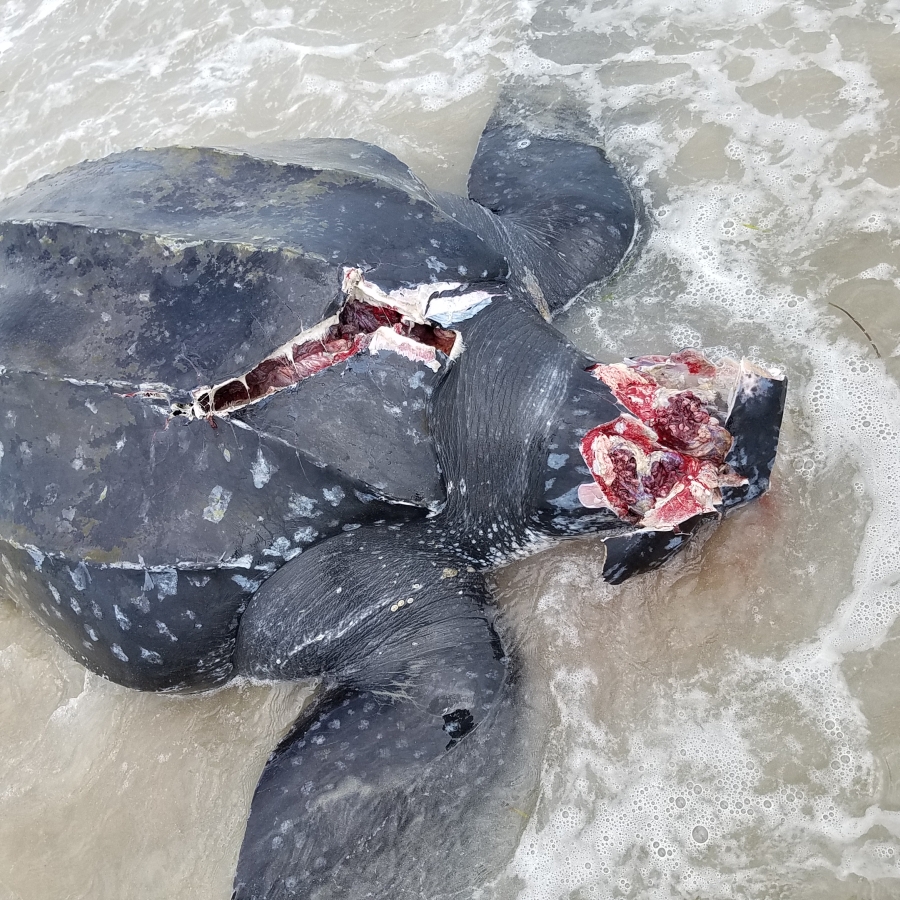
~ Dying, vessel struck Leatherback photo by WBWS staff
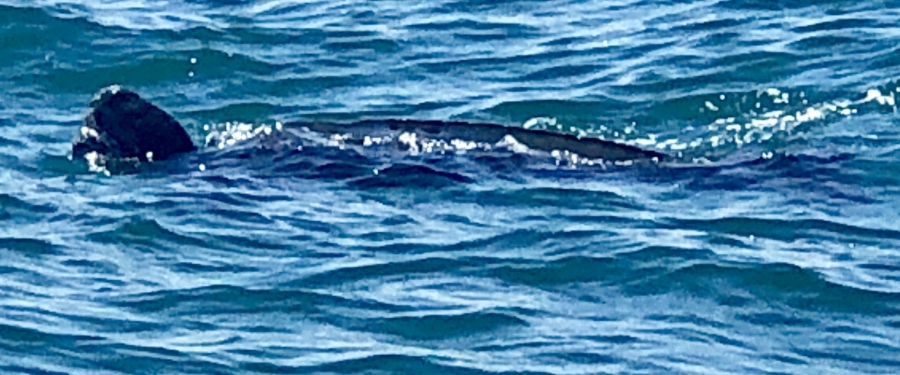
~ Swimming Leatherback photo by Nicole LaRoche
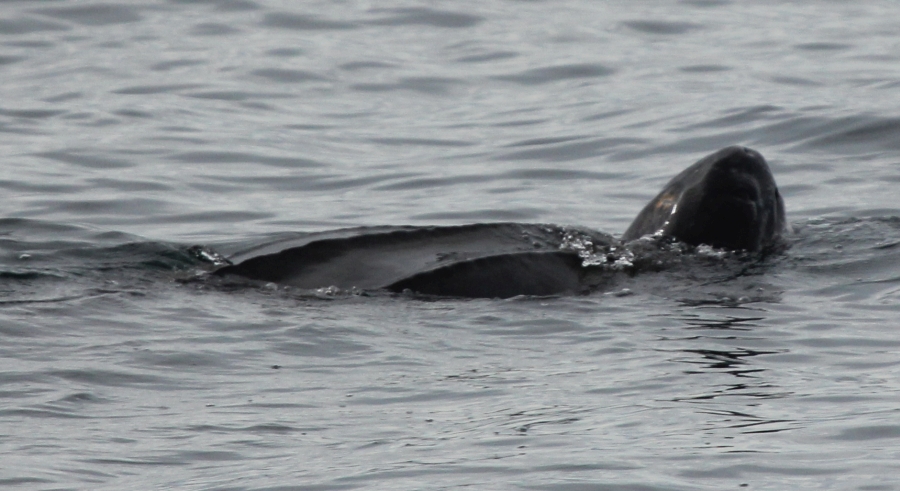
~ Swimming Leatherback, photo Melanie White, Granite State Whalewatch
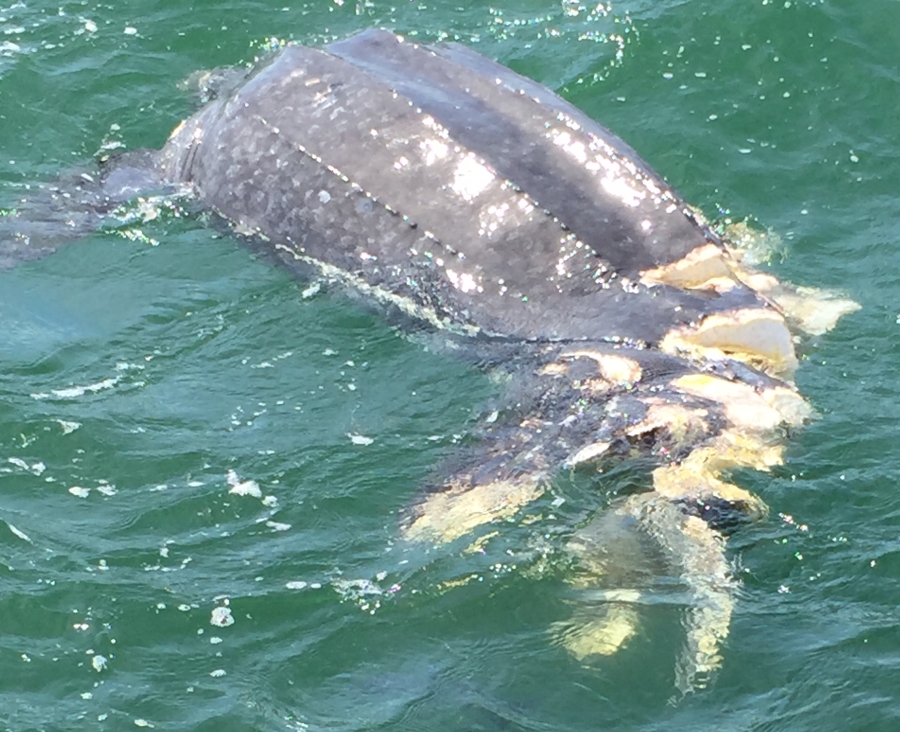
~ Dead Floating Leatherback showing propeller strikes Photo by Val and Paul Percuoco

~ Leatherback Photo by Chris Waitkun
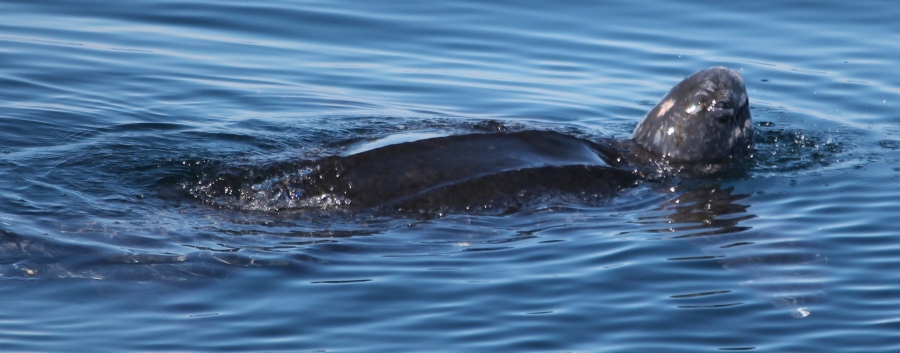
~ Leatherback Photo by Amy Warren, Newburyport Whale Watch
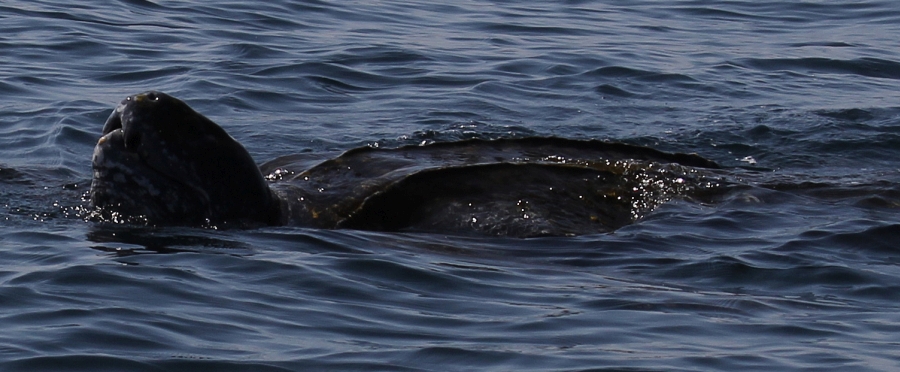
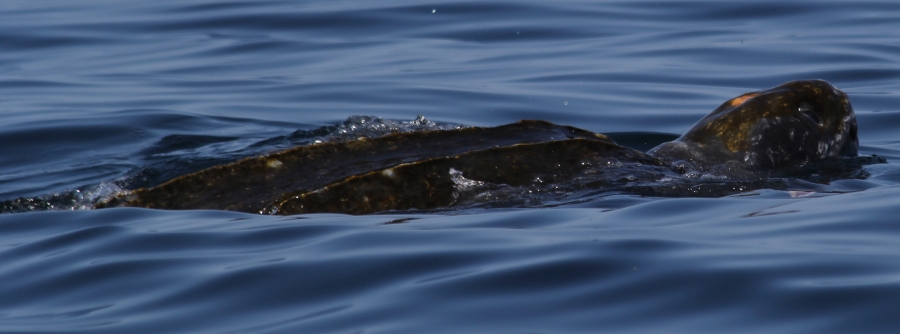

~ Leatherback Photos by Aimee Beth Grace, photos@abgphotography.net

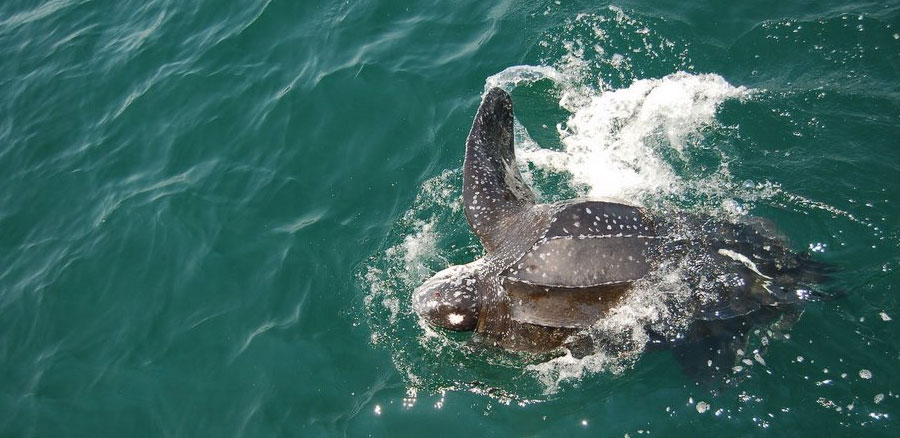
~ Leatherback Photos by Kara Dodge, Large Pelagics Research Center
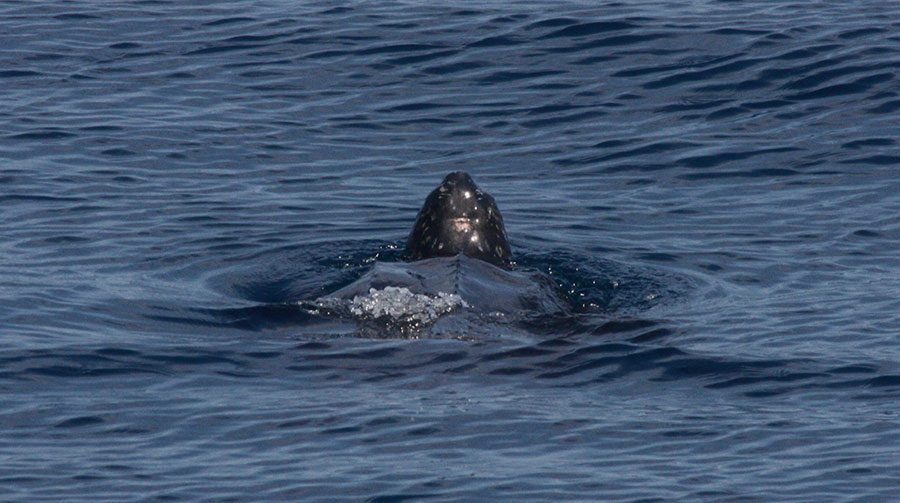
Clearly visible is the pink spot or “pineal spot,” an area of pigmentation (usually pink) on top of the leatherback's head that is associated with the pineal gland. This pink spot can be found in adults of both sexes, and the size/shape is different for each individual, making it useful as a natural unique identifier. ~ Leatherback Photo by J. Gwalthney, F/V Eileen K
